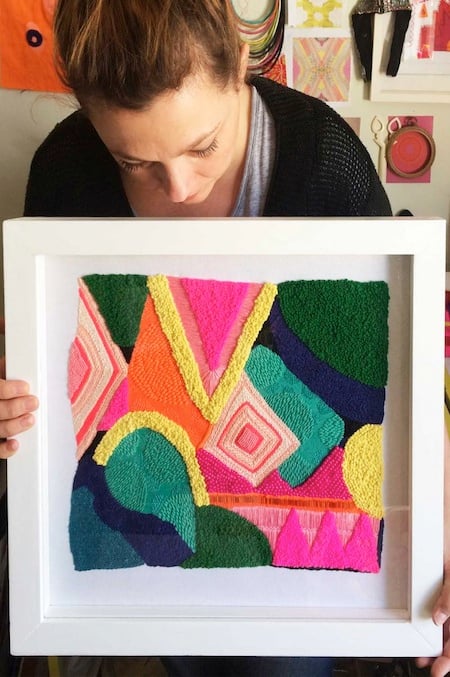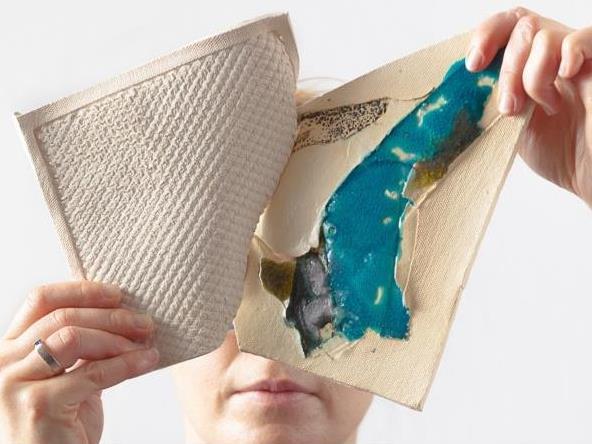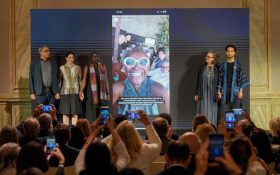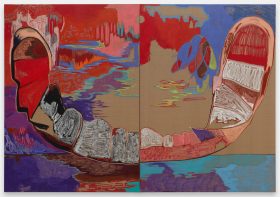Image courtesy of kil.n.it and Art Month Sydney
As the field of traditional gallery representation becomes increasing restrained, artists are looking to other commercial opportunities for both visibility and sustainability of their practice.
The most prominent alternative is Etsy which, for those who have been living under a rock, is an online marketplace where people can buy and sell handmade, vintage and unique goods.
Established a decade ago by a frustrated furniture maker from Brooklyn, US asking the same question that many artists ask – “How can I connect with customers and communicate the value of my work?” – Etsy has grown to online community of 1.6 million makers with more than 24 million buyers globally. Its website celebrates its annual gross merchandise sales in 2014 was US$1.93 billion dollars. That is a staggering turnover for any creative business.
Clearly, the model works, but some artists remain sceptical. Why, was fleshed out at the recent Art Month Sydney talk, Etsy or Regretsy, held at the contemporary ceramic studios kil.n.it.
A problem of perception
Madeline Preston, cast in the role of provocateur on the panel, started as a painter and has diversified into ceramics. She admitted that she graduated in a ‘pre-Internet era’ but moonlights as a graphic designer for the web industry.‘The issue for many artists is that they don’t embrace technology, or know how to use it, so that is why a platform like Etsy would be preferable for some artists because it is manageable for them,’ said Preston.
And yet she feels the online platform remains a ‘problematic area’.
‘There is still the issue of how that perception works within the broader fine art community. For example, an artist looking through a magazine like Australian Art Collector would not have their name associated with an online platform that sold – not just because their galleries wouldn’t allow it – but because they themselves would feel that would change the perception of career – would diminish it.’
Eloise Rankine, a studio artist with kil.n.it prefers to separate her gallery representation from her production line, Elf. She has yet to convert to the Etsy platform as a vehicle for fine art. She said: ‘I have some issues with it – what you really buy is the photograph not what the object is. You can’t pick it up, feel how heavy it is…you (also) have to respect your gallery relationship.’
That feeling is changing. A self-described ‘rock-n-roll jeweler’ in the audience made the observation: ’Etsy was always considered a bit naff – a bit too crafty – so a lot of us created stores with different names. But in the last two years or so people are now rebranding with their own name. Etsy has obviously evolved.’
Liz Payne is a Sydney textile-based contemporary artist who has managed to straddle the Etsy and gallery worlds. She has been online a couple of years now and recently won a 2015 Etsy Design Award.
‘For me, my shop was a way to have a website without the stress or details of running a website – that is why I started,’ said Payne.

Textile artist Liz Payne with her winning Etsy design Not Afraid; source
Payne says she reconciles her exhibition life and her digital world though the work itself. ‘I don’t put the original (textiles) on there a lot. I have prints of the originals instead.
‘I have a lot of people who contact me who say where can I see your work, how can I organise a commission – it just opens up double the doors,’ Payne added.
Payne does not agree that being on Etsy devalues art. ‘Just because I have my prints on Etsy doesn’t make me any less of an artist. It is just another tool to broaden your audience.’
Breaking down barriers
Etsy’s success also creates practical challenges. Payne said that searching Etsy can be like ‘going through the haystack!’ Another jeweler in the room described: ‘I felt like a lost fish.’
But Payne made the point that online merely reflects the real world. ‘You can go to so many galleries in one day and see so many things you like – and Etsy is like that as well.’
Sarah Ponthieu, PR and Communications Specialist for Etsy (Australia) said Etsy aimed to enable artists.
‘What we have done at Etsy is break down the barriers to starting business online – it is a low risk, easy way to start
‘There is a ready-made consumer base that will hopefully discover your work as opposed to a stand-alone website where they may never find you at all.’
Ponthieu said Etsy worked with makers to help them select keywords that will assist them to get the best SEO (Search Engine Optimisation).
She said Etsy’s CEO had a great analogy about online traffic and perception: ‘Setting up a website is like building a bricks and morter store in the middle of a desert and wondering why you are not getting any customers. People are just not going to find you as they are not wandering past,’ adding that the greatest advantage of Etsy is that in-built happenstance global community of customers.
Ponthieu said the conflict between the traditional art market and the online world was a false dichotomy.
‘I’d like to see that there isn’t one camp or the other, that you can straddle both spaces. Like Eloise who has a line of more commercial bread-and-butter ceramics, or Liz whose prints of her original textiles allows people to have access to her work at a more affordable price point, allowing her to have that income while giving time to larger commissions and exhibition work.’
Who is doing it?
Ponthieu said Etsy has been positioned to offer many artists, particularly women, a way of monetising their work just as there was a new appreciation of hand-made work.
‘There were a whole lot of things that came together at a similar timeframe. What we are seeing is that people are returning to placing value on the handmade and want to understand the provenance of the goods they are buying.’
A January study by the company found that 94% of Australian sellers were women, which is three times the number of female business owners generally. She reported that a significant number of those sellers were under 25.
Read: Women dominate online art sales
The demographics, did not match those of the makers in the room, which were mixed male-female and of a higher age bracket.
She reported that of the 700 Australian makers nearly half (49%) of all sellers had never sold their goods prior to Etsy.
- 66 per cent of sellers consider their shop a legitimate business and are keen to grow it.
- 26 per cent work in their business full time and that Etsy income contribute an average of 14% to the household income
- Sellers pay a commission of 3.5 per cent to Etsy on each sale, which is significantly less than the 40-50 per cent in the gallery system.
- Average buyer is between 25 – 45 and are predominantly female.
And in terms of “regretsy”? Ponthieu said they didn’t have research on the retention rate once makers joined up.
Tips from the top
Ponthieu said there was no magic formula to success on Etsy. ‘Generally having full shops with lots of items is better. If there are potentially 30 items that come up in a search, there is more chance of a hit. Also that shop feels more established and real.’
‘You just can’t have one item and say, “I am going to be a million…the sales are going to start rolling in”. There is work behind it. We find that shops with a good “About Page” do best and are the ones that really connect with the maker.’
Ponthieu said that the majority of Etsy makers and sellers will also sell at markets, have their own websites and are active on Instagram.All the panelists agreed that quality photographs are vital for any online professional presence.
Preston said: ‘If you are going to spend any money, spend it on photos – no matter how well you think you can you can do it you can’t as well as a professional photographer and that is particularly true of mediums like ceramic with high glazes.
Ponthieu added: ‘People are getting more comfortable buying online. That is why photography is so important – that is what people are basing their shopping on.’
And the best part of Etsy? Ponthieu said she loves their new App. ‘It makes the cha-ching noise, so you immediately know that you have made money, that someone likes your work – it is instant gratification.’





